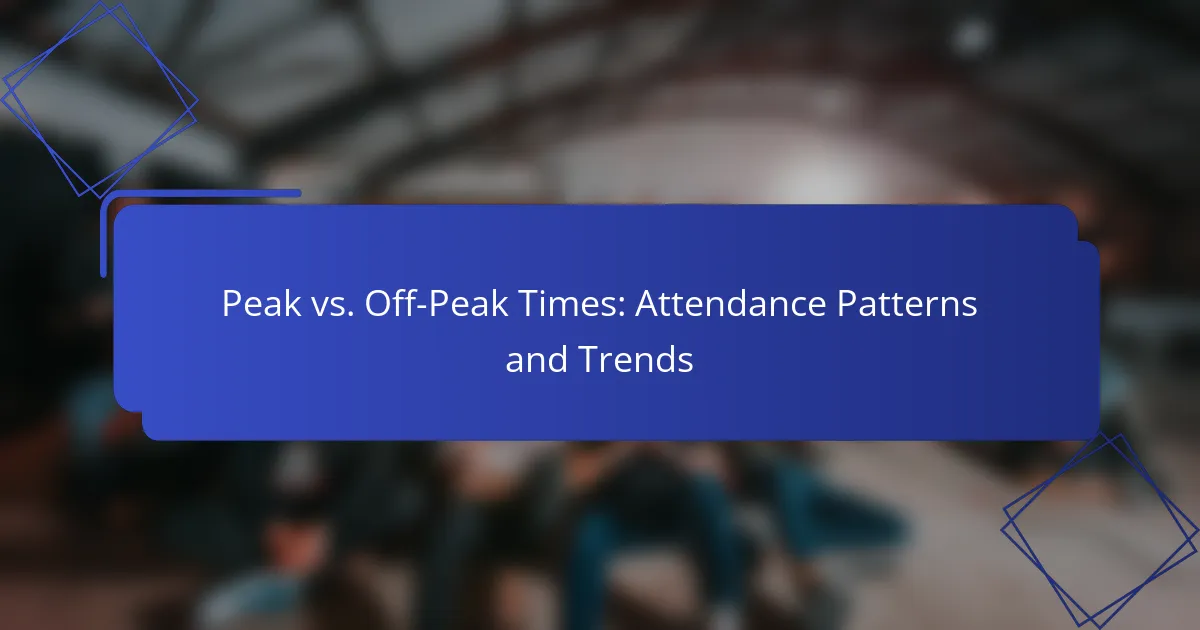Understanding peak and off-peak attendance times is crucial for optimizing your experience in major cities. Peak times are characterized by high visitor numbers, often driven by local events and holidays, while off-peak periods offer a quieter atmosphere and potential cost savings. By recognizing these patterns, you can plan your visits to avoid crowds and enjoy a more leisurely experience.
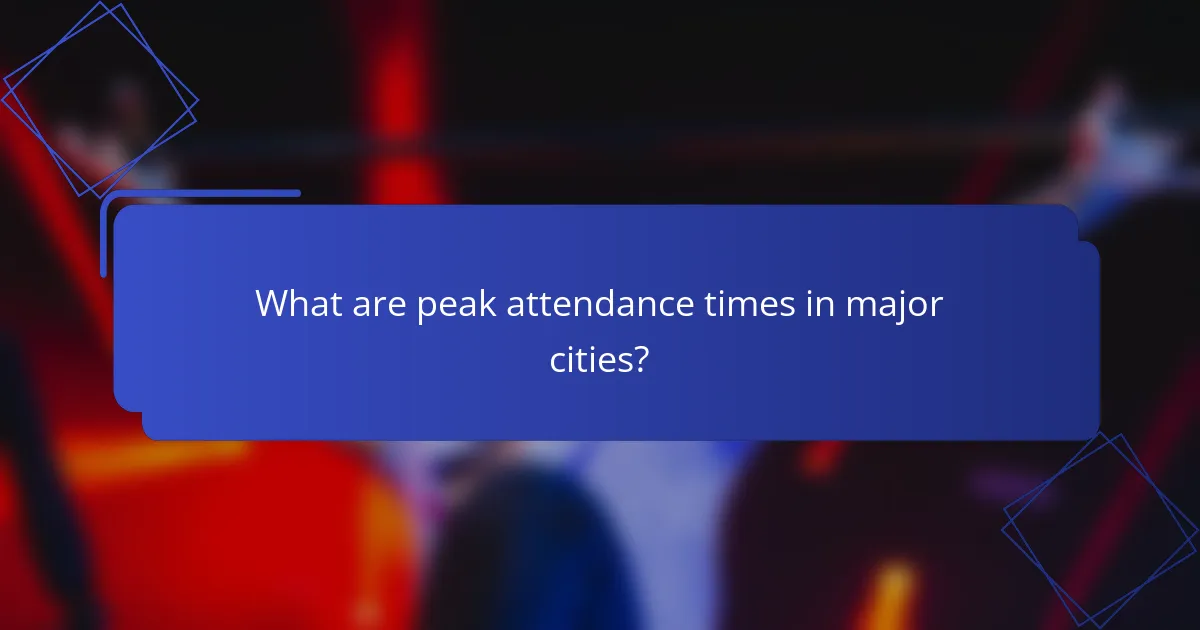
What are peak attendance times in major cities?
Peak attendance times in major cities typically refer to periods when visitor numbers are highest, often influenced by local events, holidays, and seasonal trends. Understanding these patterns can help in planning visits to avoid crowds and enhance the experience.
Weekends in New York City
Weekends in New York City are characterized by high attendance at popular attractions, restaurants, and parks. Many locals and tourists flock to iconic sites like Central Park, Times Square, and museums, leading to crowded conditions.
To navigate the busy atmosphere, consider visiting attractions early in the morning or later in the evening. Reservations for dining can also help avoid long waits during peak meal times.
Summer holidays in Los Angeles
Summer holidays in Los Angeles see a significant increase in attendance at beaches, theme parks, and outdoor events. Families often take advantage of the warm weather, leading to crowded conditions at popular destinations like Disneyland and Santa Monica Pier.
To make the most of your visit, plan trips during weekdays or arrive early to secure parking and avoid long lines. Checking event calendars can also help you steer clear of particularly busy days.
Public holidays in London
Public holidays in London, such as Christmas and Bank Holidays, attract large crowds to attractions like the British Museum and the London Eye. These times often see a surge in both local and international visitors, making popular sites especially busy.
To enjoy a more relaxed experience, consider visiting lesser-known attractions or exploring neighborhoods away from the main tourist spots. Booking tickets in advance can also save time and help you avoid disappointment during peak periods.
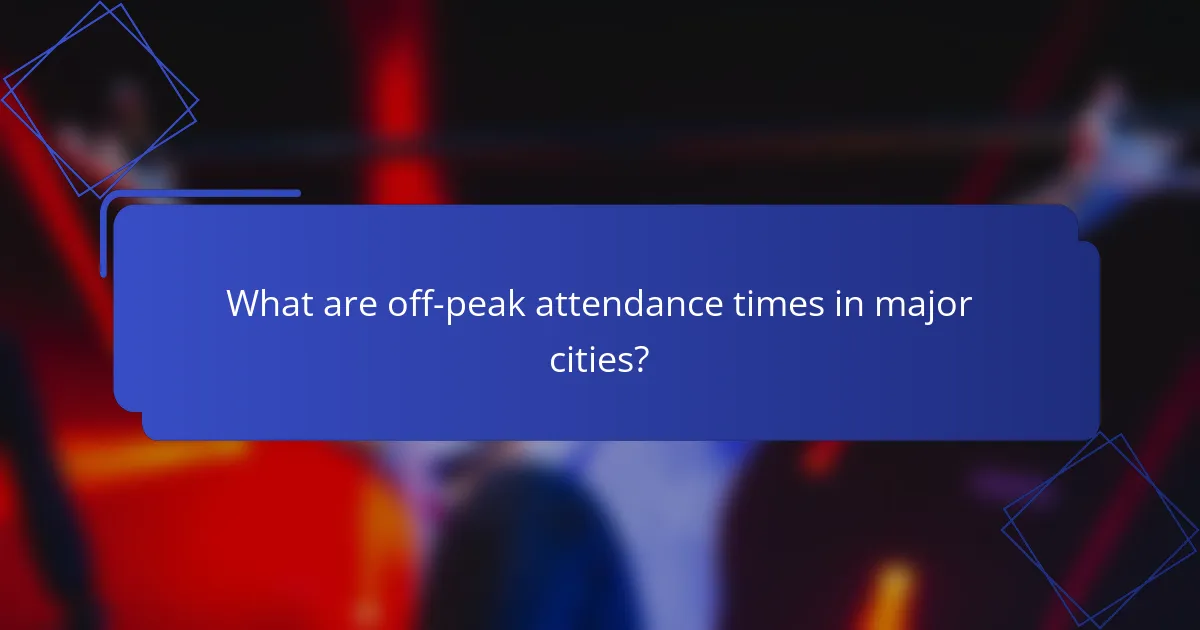
What are off-peak attendance times in major cities?
Off-peak attendance times refer to periods when fewer people are present at events, attractions, or public transport systems in major cities. These times typically occur during weekdays, outside of holidays, and during specific seasons, allowing for a more relaxed experience and often lower costs.
Weekdays in Chicago
In Chicago, off-peak attendance is most noticeable on weekdays, particularly Tuesday through Thursday. During these days, attractions like museums and theaters see significantly fewer visitors compared to weekends. For example, visiting the Art Institute of Chicago on a Tuesday morning can result in a quieter experience with shorter lines.
Additionally, public transport such as the CTA trains and buses tends to be less crowded during these weekdays, especially outside of rush hour. Travelers can take advantage of this by planning their visits around mid-morning or early afternoon.
Winter months in Toronto
Toronto experiences off-peak attendance during the winter months, particularly from January to March. Many outdoor attractions, such as parks and festivals, see reduced crowds as colder temperatures deter visitors. This is an ideal time for exploring indoor venues like the Royal Ontario Museum or the Art Gallery of Ontario with fewer people around.
Moreover, winter often brings promotional discounts for attractions and events, making it a cost-effective time to visit. Travelers should check for special winter events or exhibitions that might be available during this season to enhance their experience.
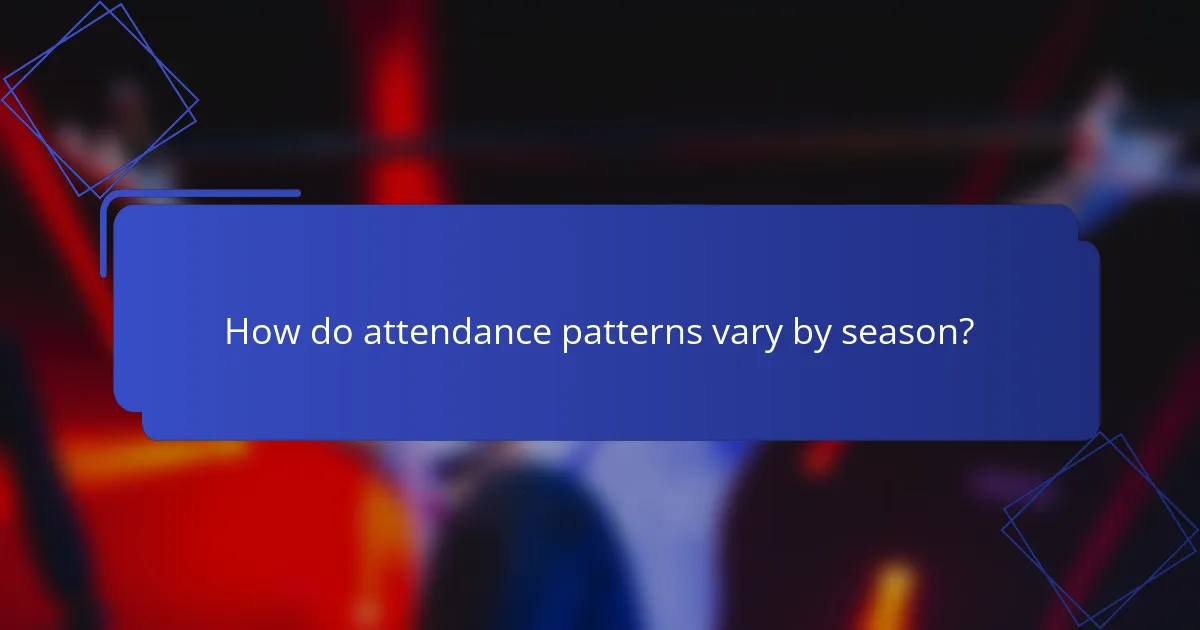
How do attendance patterns vary by season?
Attendance patterns fluctuate significantly by season, influenced by factors such as weather, holidays, and school schedules. Generally, peak times see higher visitor numbers, while off-peak periods tend to be quieter, allowing for a more relaxed experience.
Summer peak in theme parks
Summer is the peak season for theme parks, attracting families and tourists during school holidays. This period often sees attendance levels soar, with weekends and holidays experiencing the highest visitor counts.
During summer, parks may implement extended hours and special events to accommodate the influx of guests. Visitors should expect longer wait times for rides and attractions, so planning ahead is crucial. Arriving early or visiting on weekdays can help mitigate crowds.
Winter off-peak in ski resorts
Winter typically represents the off-peak season for ski resorts, especially in early December and late January. During these times, attendance is lower as many families prioritize holiday activities or wait for peak snow conditions.
Off-peak periods can offer significant advantages, including lower prices on lift tickets and accommodations. Skiers can enjoy shorter lift lines and less crowded slopes. However, it’s essential to check weather forecasts and snow reports to ensure a good skiing experience during these quieter times.
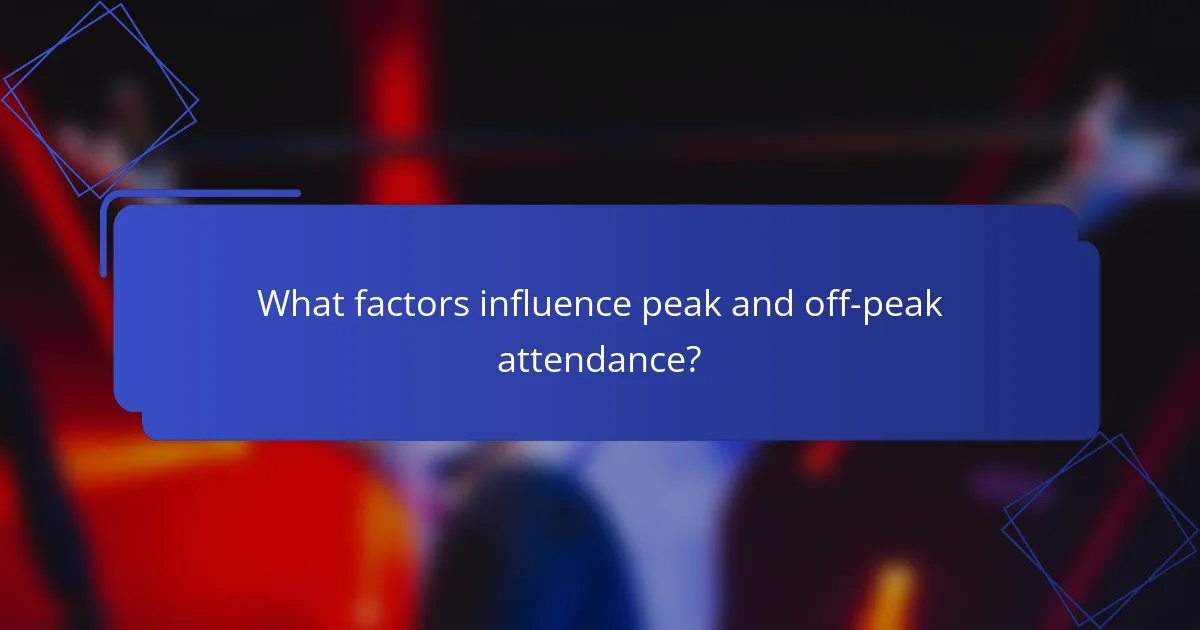
What factors influence peak and off-peak attendance?
Peak and off-peak attendance is influenced by various factors, including weather conditions and local events. Understanding these elements can help businesses and venues optimize their operations and improve customer experience.
Weather conditions
Weather significantly impacts attendance patterns. For instance, sunny days often lead to higher attendance at outdoor venues, while rainy or cold weather can deter visitors. Businesses should monitor local forecasts to anticipate fluctuations in attendance based on predicted weather conditions.
To optimize operations, consider adjusting staffing levels and inventory based on weather forecasts. For example, if a sunny weekend is expected, increase staff and stock up on popular items to meet the anticipated demand.
Local events and festivals
Local events and festivals can create spikes in attendance, often resulting in peak times for businesses. Events such as concerts, fairs, or sports games attract large crowds, leading to increased foot traffic in the area. It’s essential to be aware of the local calendar to prepare for these surges.
To capitalize on these opportunities, businesses should promote special offers or events that coincide with local happenings. This strategy can enhance visibility and attract attendees who are already in the area for the event.

How can businesses optimize for peak times?
Businesses can optimize for peak times by implementing strategies that enhance efficiency and maximize revenue during high-demand periods. This involves understanding attendance patterns and adjusting operations accordingly to meet customer needs while managing costs.
Dynamic pricing strategies
Dynamic pricing involves adjusting prices based on demand fluctuations, allowing businesses to capitalize on peak times effectively. For instance, airlines and hotels often increase prices during holidays or major events, which can lead to significantly higher revenues.
To implement dynamic pricing, businesses should analyze historical attendance data and market trends. This can help identify peak periods and set pricing tiers that reflect demand. However, it’s crucial to maintain transparency with customers to avoid backlash from sudden price hikes.
Targeted marketing campaigns
Targeted marketing campaigns can effectively drive attendance during peak times by reaching specific customer segments with tailored messages. Businesses can use data analytics to identify their most valuable customers and create promotions that resonate with them.
Consider using email marketing, social media ads, or loyalty programs to engage customers during peak periods. For example, offering exclusive discounts or early access to events can encourage attendance and increase customer loyalty. Monitoring campaign performance is essential to refine strategies and maximize impact.
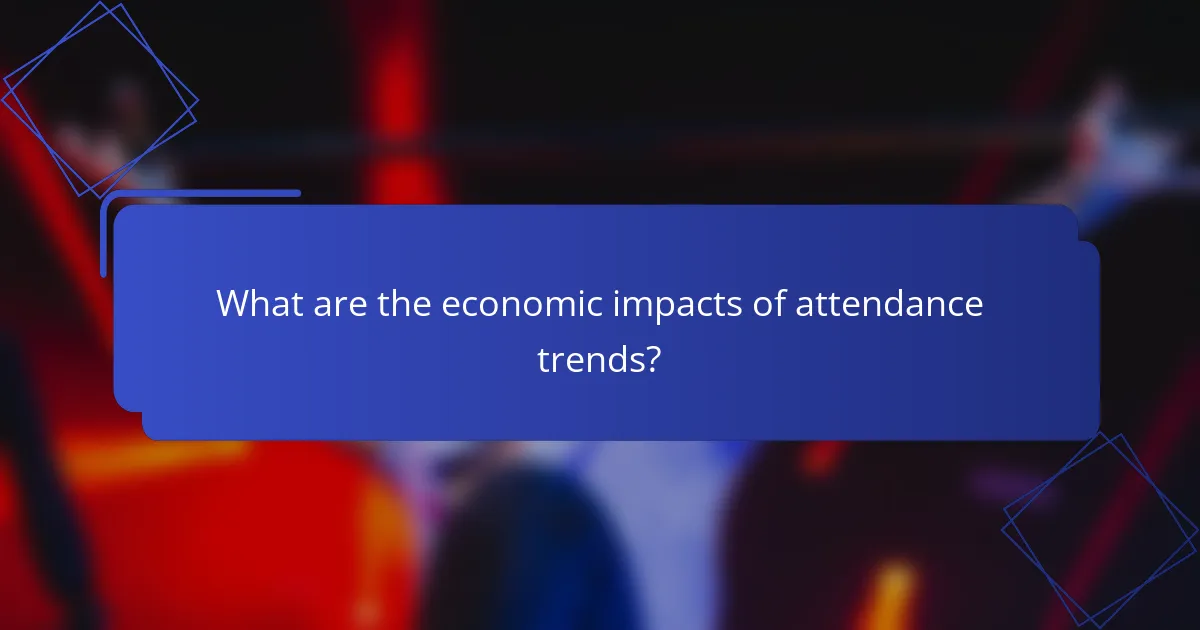
What are the economic impacts of attendance trends?
Attendance trends significantly influence economic factors such as revenue generation and employment in the tourism sector. Understanding these patterns helps businesses and policymakers make informed decisions to optimize performance and resource allocation.
Revenue fluctuations
Revenue in tourism often varies between peak and off-peak times, with peak seasons typically yielding higher earnings. For instance, attractions may see a revenue increase of 30-50% during peak months compared to quieter periods. Businesses should consider dynamic pricing strategies to maximize income during high-demand times.
To mitigate revenue loss during off-peak seasons, operators can implement promotions or package deals. Offering discounts or special events can attract visitors when attendance is generally lower, helping to stabilize cash flow throughout the year.
Employment changes in tourism
Attendance trends directly affect employment levels in the tourism industry, with peak seasons often requiring additional staff. Many businesses hire seasonal workers to manage increased visitor numbers, which can lead to fluctuations in job security for employees. This seasonal hiring can be beneficial for local economies but may also create challenges for workforce stability.
During off-peak times, businesses may reduce staff hours or implement layoffs, impacting local employment rates. To counteract this, companies can invest in training programs that prepare employees for year-round roles, enhancing job security and skill development within the community.
